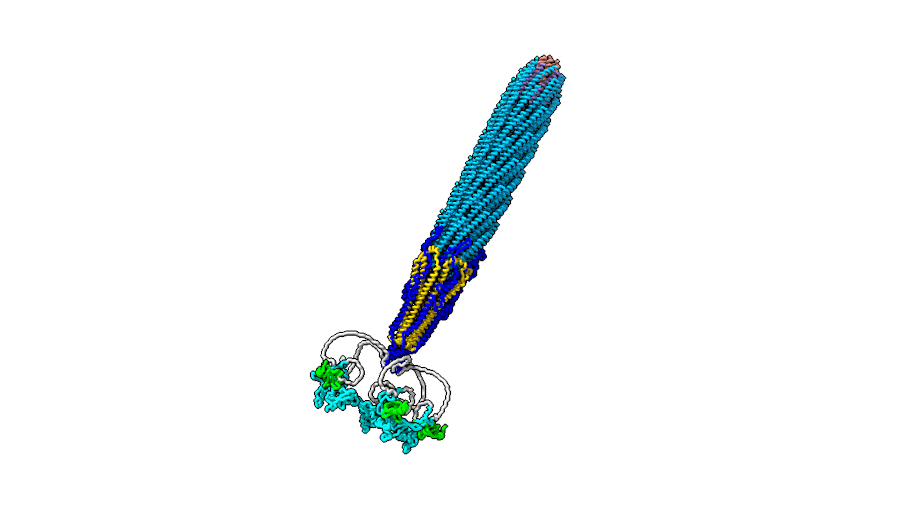New insights into the structure of phages will enable researchers to develop new applications for the viruses in biotechnology.
Phages are viruses that infect bacteria, allowing them to be utilized as tools in biotechnology and medicine. Now, for the first time, researchers at the University of Exeter, in collaboration with Massey University and Nanophage Technologies, New Zealand, have mapped out the appearance of a commonly used form of phage, which will assist researchers in designing improved applications in the future.
One common application for phage is phage display, a valuable tool in drug discovery. Phage display works by connecting a gene fragment of interest to a phage gene that produces one of the phage coat proteins. The newly formed coat protein, along with the linked protein of interest, becomes visible on the surface of the phage, where it can be analyzed and tested for its biological activity.
A multitude of phage types exist, and phage display often employs a type known as filamentous phage, named for their elongated and slender shape, which allows for the display of numerous proteins on their surface. While phage display and other applications have proven successful, until now, scientists have been unaware of the visual structure of this type of phage.
Dr. Vicki Gold at the University of Exeter has, for the first time, revealed the structure of a filamentous phage in research published in the journal Nature Communications. She explained that understanding the appearance of filamentous phages will assist in enhancing future phage applications.
Due to the considerable length of filamentous phages, scientists previously encountered difficulties in capturing their complete image. To visualize the phage, researchers generated smaller versions that were approximately ten times shorter, resembling straight nanorods rather than entangled spaghetti-like filaments. This reduced version was small enough to be imaged in its entirety using high-resolution cryo-electron microscopy.
The paper, titled “Cryo-electron microscopy of the f1 filamentous phage reveals insights into viral infection and assembly,” was published in the journal Nature Communications. The research was funded by Wellcome.


